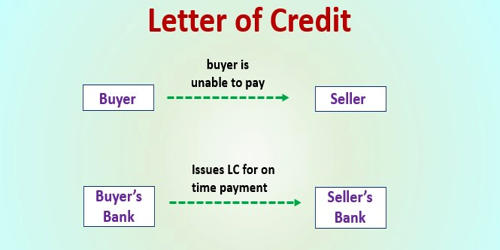A dividend reinvestment program (DRP) or dividend reinvestment plan (DRIP) is a firm’s plan that allows shareholders to automatically reinvest their cash dividends in more shares of the company on the dividend payment date. The word can refer to any automatic reinvestment arrangement set up through a brokerage or investment institution, but it usually refers to a formal program offered to exist shareholders by a publicly traded corporation.
Dividend investing is a popular way to generate income while also putting money aside for retirement. The firms you own pay you a portion of their earnings as dividends based on the number of shares you own when you buy dividend stocks. Dividends allow you to receive cash from your stock assets without having to sell any.
Dividend reinvestment can help you compound your returns over time by allowing you to acquire additional shares while lowering your risk through dollar-cost averaging. Dividend reinvestment arrangements are usually free of commissions and offer a discount on the current share price. Whether the dividend income is received in cash or reinvested, the investor must pay tax on it each year.
DRIPs, also known as dividend reinvestment programs, allow shareholders to reinvest the amount of a declared dividend into additional shares that are purchased directly from the firm. It allows dividend investment returns to be invested instantly for price appreciation and compounding without incurring brokerage costs or waiting to earn enough funds for a complete share of stock.
Some DRIPs are free to join, while others levy fees and/or proportional commissions to participants. DRIP shares are not marketable on stock exchanges because they are normally purchased from the company’s internal reserve. The three common types of dividend reinvestment plans are:
- Company-operated DRIP: The corporation runs its own DRIP, with a dedicated staff in charge of the entire strategy.
- Third-party-operated DRIP: The DRIP is outsourced to a third-party provider who manages the entire plan. This is frequently done when a company’s own DRIP is too expensive and time-consuming to operate.
- Broker-operated DRIP: Some corporations may not offer a DRIP, but brokers may offer one to investors on certain assets. Brokers purchase shares on the open market as part of a broker-operated DRIP. Brokers typically charge little to no commission for DRIP stock purchases, depending on their client relationships.
Most DRIPs allow investors to purchase shares without paying a commission or for a small charge, and at a large discount to the current share price; dollar minimums may apply. Some companies provide DRIPs with a variety of options, such as full or partial reinvestment. Those who want a constant flow of cash in their checking or savings account can direct a portion of their income there rather than reinvesting them entirely.
Dividends can be saved, invested, or spent on a regular basis by investors. A dividend reinvestment plan, whether monthly, quarterly, or annually, automatically purchases more shares of a company’s stock using the dividends it pays out. DRIPs tend to have a stabilizing effect on stock prices since they encourage long-term investment rather than active trading.
For both the corporation issuing the shares and the shareholder, there are various advantages to purchasing shares through a DRIP. A dividend reinvestment plan offers the following advantages:
- Accumulate shares without paying commission: When purchasing shares using DRIPs, shareholders are usually not charged a commission or additional brokerage fees. As a result, when they participate in a DRIP, they save money on transaction fees.
- Accumulate shares at a discount: The majority of corporations give a discount on their stock’s current market price. When shareholders participate in a DRIP, they can purchase shares at a lower cost basis.
- Compounding effect in action: DRIPs enable investors to generate compounding profits by automatically reinvesting cash dividends. Reinvestment leads to compounding, which accelerates the growth of the investment.
- Acquisition of long-term shareholders: Shareholders that participate in a DRIP often invest for a long time. As a result, a DRIP is beneficial to organizations wanting to build a loyal, long-term shareholder base.
- Creation of capital for the company: DRIPs enable a business to raise more financing. The corporation can raise more funds by issuing shares to shareholders in exchange for cash dividends.
A dividend reinvestment plan has some drawbacks in addition to its benefits, including the following:
- Dilution of shares: As the corporation issues more shares to shareholders, the market will see an increase in the number of outstanding shares. As a result, stockholders who do not take part in the company’s DRIP will have their shareholding diminished.
- Lack of control over the share price: The investor has little control over the stock price because the shares are automatically purchased. They may decide to buy in the stock when it is at a very high price.
- Longer investment horizon: Short-term investors should avoid DRIPs, especially if the company pays dividends semi-annually or annually. Instead of waiting for the additional shares to arrive at the end of six months or a year, the investor might choose to purchase them immediately from the market.
- Bookkeeping purposes: DRIP-acquired shares are taxable, as they are deemed income despite the fact that the cash dividend was reinvested. As a result, shareholders must keep records (such as a transaction record, cost basis, and capital gains/losses) for tax reporting purposes. For investors, it can be inconvenient and time-consuming.
- Lack of diversification: A dividend reinvestment plan (DRIP) broadens an investor’s exposure to a corporation. The investor’s portfolio will become more highly exposed to the company as they acquire additional shares through the DRIP. DRIPs may necessitate rebalancing an investor’s portfolio on a regular basis.
DRIPs have grown popular among a wide range of investors because they allow them to efficiently take advantage of dollar-cost averaging with income in the form of corporate dividends paid out by the corporation. DRIPs assist dividend-paying corporations in a few of ways.
For starters, when shares are purchased from the firm for a DRIP, the corporation has additional capital to work with. Second, when the stock market falls, shareholders who participate in a DRIP are less likely to sell their shares. Companies frequently allow investors to buy fractional shares, allowing them to roll their full dividend into new stock and compounding their returns.
















